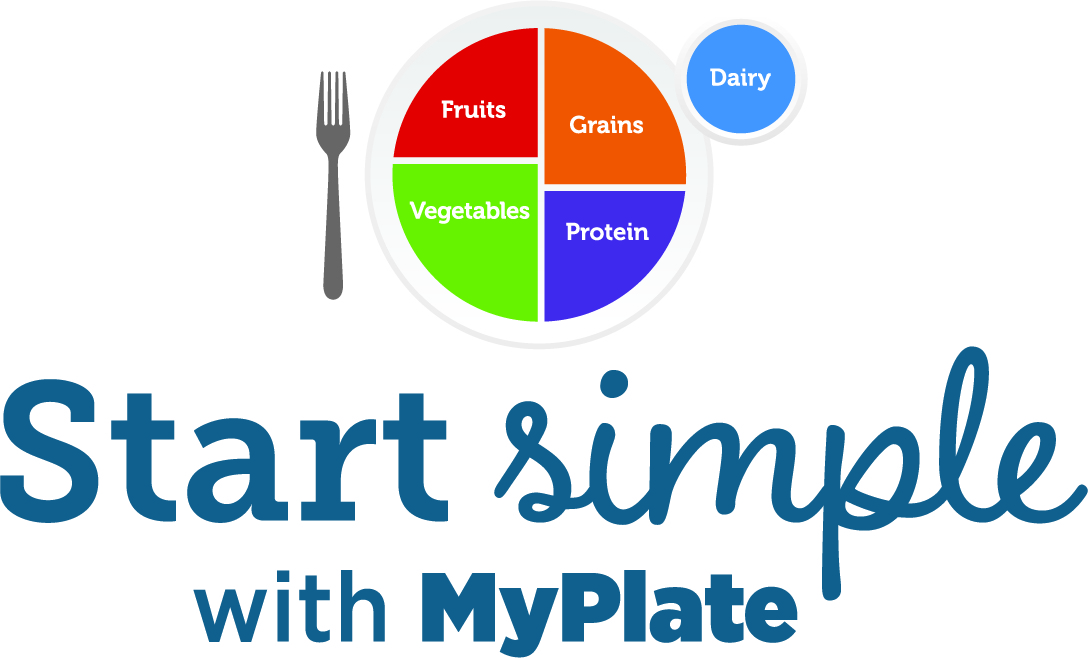Food & Nutrition
How Do I Eat Healthy?
Healthy eating doesn’t have to be complicated. Americans would be much healthier if we all simply ate 2 cups of fruit a day and 3 cups of vegetables a day along with our snacks and meals. That’s it.
- Find lots of information on how to prepare tasty fruits and vegetables from Have a Plant.
- Find basic nutrition information on meal planning from the USDA’s MyPlate.
- Find more nutrition information from the CDC.
- Find more information on how to give your child the best nutrition and other lifecycle stages

Healthy recipes and more
There are many sources on the internet for recipes. How can you find recipes that you know are healthy? Here are some dependable sites that also include nutrition information.
- The Academy of Nutrition and Dietetics is a trustworthy source for nutrition information. There are daily tips and a question of the day, as well as a feature on reviews of popular diet books so that you can avoid diet scams.
- If you wish to find a local registered dietitian and speak with them directly, this Dietitian Locator will be helpful.
- Mayo Clinic You can search by special diet, such as high fiber, heart-healthy, or meatless. It also lets you search for recipes by main ingredient.
- The American Institute for Cancer Research promotes foods that can help fight cancer. Their research on specific foods translates into delicious recipes that promote health.
- The American Heart Association provides healthy living and lifestyle resource center including heart-healthy recipes.
- National Institutes of Health offers recipes that are heart healthy and include important information about the serving size, number of servings, calories, and other nutrients. Also includes heart healthy Latino recipes, in Spanish and English.
- The Create Better Health (SNAP-Ed) program at Utah State University Extension provides information, recipes, cookbooks and resources to help busy families plan, shop, and cook health meals.
- Live Well Utah has a farmer's market themed cookbook that also includes helpful information for planting a family garden along with harvesting, cooking and preserving the produce.
- Washington State University Nutrition Program has a set of healthy recipes for families, including kid-friendly and thrifty choices. Available in English and Spanish.
Red Flags for Misinformation on Nutrition
The media and internet are great sources for nutrition information. Along with good information, there is a lot of misinformation that can even harm your health. There are many things you can look for when evaluating the credibility of a source. Ask yourself these questions when evaluating:
- Does the information seem too good to be true?
- Does it say you will be able to get quick and easy results?
- Does the information come from a trendy magazine, newspaper, news report or website that ends in .com?
- Is the source trying to sell you something?
If the answer to any of these questions is “YES” then you need to be more careful in what you believe from that source. Credible nutrition information sources should usually have the following characteristics:
- Involve eating healthy with all things in moderation, and exercising
- Seem to show slow but steady results
- Be backed by journals and published research (i.e. Journal of the Academy of Nutrition and Dietetics, Journal of the American Medical Association, Journal of the American Academy of Pediatrics, American Journal of Clinical Nutrition)
Come from a nonprofit organization or websites that end in .gov or .org (i.e. Eatright.org, Choosemyplate.gov, U.S. Department of Agriculture, American Heart Association, American Diabetes Association, Utah Breastfeeding Coalition, UDOH
Where Do I Find Healthy Foods?
There are likely healthy food sources all around you, but if you need some help finding them, keep reading. The following are some resources that may help you shop healthier and improve your food choices.
Nutrition Policy
Learn why nutrition policy is important, because eating healthy takes more than willpower. Our environment affects our eating habits more than we might realize. The Center for Science in the Public Health includes policy options to promote nutrition. Here are some example efforts:
Utah Programs:
- Increase resources for healthy foods in food retail, such as Eat Well Utah
- Support nutrition in school foods, such as Smarter Lunchrooms
- TopStar Support healthy menus and physical activity in early childcare centers
- Increasing access to fruits and vegetables: Double Up Food Bucks
National Policy:
- Nutrition labeling
- USDA Dietary Guidelines
- Marketing of low-nutrition foods to children
- Improving school meals and foods sold outside of meals
- Promote fruit and vegetable intake
- Improving healthy food environments
Food Policy Councils
Food policy councils bring together diverse stakeholders from many sectors of the food system. They serve as forums for discussing food issues, foster coordination between sectors in the food system, evaluate and influence policy, and launch or support programs and services that address local needs. Learn more about food policy councils from the CDC.
Check out Utah’s Local Food Advisory Council, Salt Lake City’s Food Policy Council and Ogden Food Council